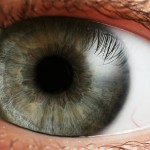Of all the senses in our body, vision is the most dominant one. It supersedes all other physiological methods of perception in its richness and complexity. For this one reason, people fear blindness the most, as a disability. Facts reveal that there are many people worldwide that suffer from vision related problems (blindness, colour blindness, etc), making eye research one of the most lavishly funded areas. A long history of tinkering with vision has today made possible its restoration in damaged eyes, with the help of laser surgery, cataract removal and contact lenses.
The latest addition to lens technology is the making of Light-adjustable lenses (LAL), the greatest ever advancement since intraocular lens that came into being 60 years ago. Light-adjustable lenses (LAL), made by Calhoun Vision, an American company, offer the prospect of 20/20 vision to thousands of people who become short sighted or develop cataracts with age. These lenses offer the prospect of a ‘better than perfect’ vision by allowing bifocal or varifocal vision, giving patients good vision at a distance and for reading alike, without the need for glasses.
(LAL), the greatest ever advancement since intraocular lens that came into being 60 years ago. Light-adjustable lenses (LAL), made by Calhoun Vision, an American company, offer the prospect of 20/20 vision to thousands of people who become short sighted or develop cataracts with age. These lenses offer the prospect of a ‘better than perfect’ vision by allowing bifocal or varifocal vision, giving patients good vision at a distance and for reading alike, without the need for glasses.
Once the lens is implanted, a small process involving shining ultraviolet light on specific parts of the new LAL to change its shape and curvature can be done to sharpen the image seen by the patient. Additionally, this implanted LAL can be repeatedly adjusted before being fixed permanently, two or three weeks after the surgery.
According to industry analysis, about 420,000 presbyopia-correcting intraocular lenses were implanted around the world last year, up from about 301,000 in 2007. Although effective, they come with the flip side of about 80 per cent of patients still requiring glasses for reading or other tasks, due to imperfections as the eye heals, or slight errors in measurement of the implanted lens.
Years after practicing cataract surgery, wherein an ageing, cloudy lens is extracted to be replaced with a fresh one, and clear lens extraction where the lens is replaced with an artificial multifocal or accommodative implant, LAL implants, for the first time in the history of eye surgery, offers correction of any residual errors that reduce vision without requiring any additional surgical procedures.
According to Bobby Qureshi, a leading eye surgeon, “We have the potential here to change patients’ vision to how it was when they were young,” he added. “The technology allows us to make adjustments after the lens is in place and healing has occurred. He has so far used the technique in ten operations said the total cost of an operation and adjustment would be up to £3,000 per eye, “but patients think it is worth it”.
Mr Qureshi implants the lens using a micro-incision surgical technique where no stitches are required. In about 2 weeks after the wound heals, the patient returns for an adjustment of the lens to achieve the best vision possible. More than one adjustment is possible if required before the lens is ‘locked’. It will never need to be replaced and will last forever. The adjustment to optimize vision is permanent and it will never again need readjustment.
However, slight scepticism was expressed by Larry Benjamin, an ophthalmic surgeon at Stoke Mandeville Hospital and a vice-president of the Royal College of Ophthalmologists, who said: “The LALs are a very interesting concept that has been under trial for two years in the United States. The trials seem to give respectable data, but we haven’t seen long-term outcomes for large numbers of patients yet. One downside is that it might not be suitable for all patients if there are complications during surgery, and the cost may increase if you require repeat visits to hospital.”
Nevertheless, one is still optimistic about positive outcomes with this procedure in the years to come.
Article by Snigdha Taduri for Biomed-ME
